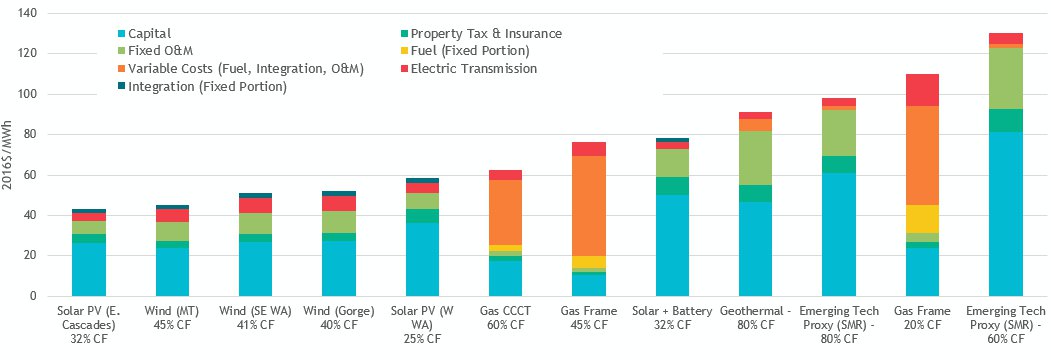One way to compare the cost of a generating resource against another is to look at the levelized cost of energy, which is a metric used to estimate the cost of energy across a resource’s expected economic life. It is calculated as the cost per unit of energy a resource is expected to generate (under an assumed level of dispatch, or capacity factor) and which also includes variable costs such as fuel. Although the initial capital cost for solar and wind may be higher than gas resources, with minimal operating costs (no fuel purchases), the overall cost of producing energy can be significantly less.
The static levelized cost of energy for generating resource reference plants as calculated in the figure below is not used in any of the Council’s models because they are capable of performing dynamic dispatch. LCOE calculations rely on an assumption of dispatch which may or may not be true (and likely isn’t true 100% of the time). Reflecting an assumed dispatch of 60%, for example, would indicate substantially better economics than would be realized if the actual dispatch was closer to 10%. It is also important to remember that you cannot compare an LCOE as calculated in the Council’s analysis with an LCOE from another study or source – the underlying assumptions will likely not be the same, which can affect the end result of an LCOE.
Levelized Cost of Energy for Generating Resource Reference Plants

*Assumes a 2021 operation date for all resources, with exception of 2030 for emerging tech; CF=average annual capacity factor at the location of the reference plant, given the technology (see reference plant for more info); stand alone battery and pumped storage are not represented in this graphic because the cost of "fuel" (electricity) is not captured in MicroFin at this time.



